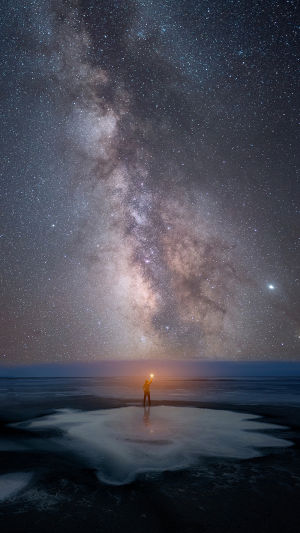Stars are objects in the universe that are visible to the eye. The movement of energy inside the stars causes them to become irregular in shape. Stars can be roughly divided into planets, stars, comets, white dwarfs, and so on.
1. The planet itself doesn't give off light; we see it reflect light from the sun.
2. Stars are large celestial bodies similar to the sun that react within themselves and radiate energy into space in the form of light.
3. Comets, like Halley's Comet. The light we see is the result of comet tails that melted away their material as they passed through the solar system. So comets tend to have long tails.
Most of the stars you can see at night are stars. Several are planets in our solar system, such as Venus, Mercury, and Mars. Stars shine in a way similar to the sun.
Most of it comes from hydrogen fusing into helium nuclei, and some of it comes from helium fusing. It is only because they are so far away that they appear to be gentle little stars.
They're bigger than the sun. And planets look bright because they reflect light from the sun.
The sun, which looks as big as the moon in the sky, has a diameter of 1.392 million kilometers and a volume about 1.3 million times that of the Earth.
Coincidentally, the sun is about 400 times larger in diameter than the moon, but it is also about 400 times farther away from the Earth, so it looks about the same size.
As a moon, the moon is the largest of the 66 discovered moons in the solar system. There are only four or five moons larger than the moon, the largest of which, Ganymede, is more than 5,200 kilometers across. Most of the others are only a few tens to a few hundred kilometers.
As a planet, the Earth ranks fifth in size among the eight planets, making it a medium size. The largest Jupiter is 1,300 times the size of Earth, the brightest Venus is about the same size as Earth, and red Mars is just over an eighth the size of Earth.
We can all see a star or two in the distant sky, so long as there are no clouds in the way. The human eye can only see a few hundred meters. There are several reasons why we can see the stars in the sky.
1. The stars are too big.
The area of the stars is enormous. Such a huge star, of course, we can see it from Earth.
2. The light from the stars.
Although not as harsh as that of the sun, the light it gives off is unique. Our eyes can pick out the light, pick out the stars.
3. Eyeball resolution.
The resolution of the eyeball is about 10 to 20 microns. Stars are bigger than that.
Two main factors determine whether the stars are bright or dark. One is the size of the star's luminous power, and the other is the distance between the stars and the people.
On summer nights, when Earth moves across from the center of the Milky Way, stars are most visible afternoon.





